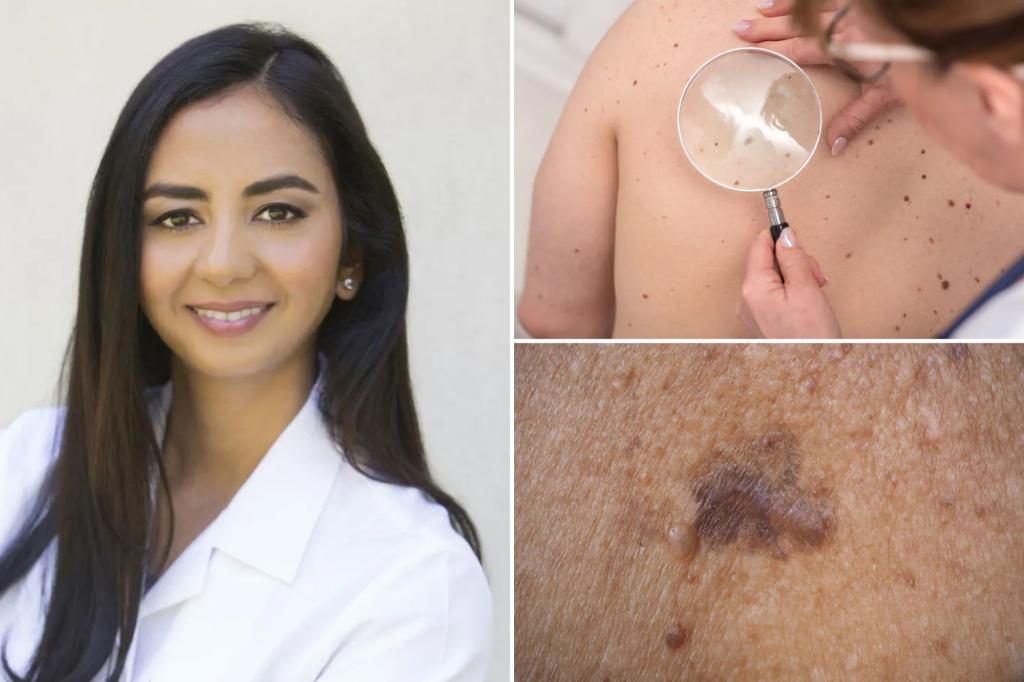Sunbathing’s Hidden Dangers: Understanding and Detecting Skin Cancer
Sunbathing might feel wonderful and give you that coveted summer glow, but beneath the surface, dangerous changes could be happening to your skin. Skin cancer stands as America’s most common cancer—and tragically, one of its most preventable. Every hour, at least two Americans lose their lives to this disease, primarily caused by overexposure to ultraviolet (UV) radiation from the sun or tanning beds. As summer fades into fall, now is the perfect time to thoroughly examine your skin for any concerning changes that might have developed during those sunny months. According to Dr. Asha Patel Shah, a board-certified dermatologist, establishing a baseline through regular self-examinations is crucial: “When you really learn the patterns of your own skin, you can more easily spot when something changes.” This personal knowledge forms your first line of defense against skin cancer’s silent progression.
The three main types of skin cancer present differently and carry varying levels of risk. Basal cell carcinoma (BCC), the most common form, develops from cells in the deepest skin layer and typically appears as small, pearly or flesh-colored bumps, or as reddish-pink scaly patches. Squamous cell carcinoma (SCC) originates in the upper skin layers, showing up as rough, red patches or firm, pink bumps. Most dangerous of all is melanoma, which has recently claimed high-profile victims including Brandon Blackstock, Kelly Clarkson’s former husband, who died at just 48 after a three-year battle with the disease. “The Real Housewives of Beverly Hills” alumna Teddi Mellencamp was diagnosed with melanoma in 2022 at age 44. Melanoma often manifests as dark, unevenly colored spots or as pink, red, or skin-toned lumps. Dr. Patel Shah, who leads medical affairs for North America in skin health and beauty at Kenvue, warns that “skin cancer can truly mimic benign skin lesions, conditions or symptoms,” making vigilance all the more important.
When conducting a self-examination, thoroughness is essential—no area is too private or insignificant to check. Remember to inspect your scalp, genital area, palms, between fingers, under fingernails, and beneath your breasts. Taking photos of suspicious areas can be helpful to share with your doctor later. The ABCDE method provides a useful framework for evaluating moles and lesions: Asymmetry (one half differs from the other), Border irregularity (edges are notched or poorly defined), Color variation (either different from other moles or containing several colors within one spot), Diameter (larger than 1/4 inch, about the size of a pencil eraser), and Evolution (changes in size, shape or color over time). Dr. Patel Shah recommends monthly self-exams, especially for those at higher risk due to previous skin cancer history, family history of skin cancer, atypical moles, or immune system issues. These high-risk individuals should also see a board-certified dermatologist at least annually.
Beyond the ABCDE method, Dr. Patel Shah identifies several other warning signs that warrant attention. Any growth, sore, or lesion that fails to heal properly—either never healing completely or repeatedly reopening after apparent healing—should raise immediate concerns. Similarly worrisome are rough, dry patches that resist moisturizers, particularly in sun-exposed areas like the face, forearms, or chest. Be alert to rapidly growing new lumps, bumps, or growths, especially if they cause pain or discomfort. Persistent wart-like growths that hurt or cause soreness also merit professional evaluation. The development of pigmented lesions showing asymmetry, irregular borders, or color changes represents another classic warning sign of potential skin cancer.
Some less obvious indicators include pigmented lesions in “special sites” such as palms or soles, dark or uneven streaks in fingernail plates, and any skin area that persistently itches, feels tender, or bleeds without obvious cause. In rare cases, widespread skin conditions resembling eczema that don’t respond to standard treatments could indicate a form of skin cancer unrelated to UV exposure. The diversity of these warning signs underscores why regular, methodical self-examinations are so important—skin cancer doesn’t always announce itself in obvious ways. By familiarizing yourself with your skin’s normal appearance and monitoring for changes, you create an early warning system that could literally save your life.
While skin cancer statistics sound alarming, the fact that this disease is largely preventable offers hope. Sun protection habits—wearing broad-spectrum sunscreen daily, seeking shade during peak UV hours, wearing protective clothing, and avoiding tanning beds—significantly reduce your risk. Combined with regular self-examinations and professional skin checks, these preventive measures form a powerful defense against skin cancer. The beauty of a tan fades quickly, but the damage it represents can last a lifetime. By understanding the warning signs and taking proactive steps to protect yourself, you can enjoy the outdoors safely while keeping your skin healthy for years to come. Remember that early detection dramatically improves treatment outcomes, making those few minutes spent checking your skin each month a small investment with potentially life-saving returns.














